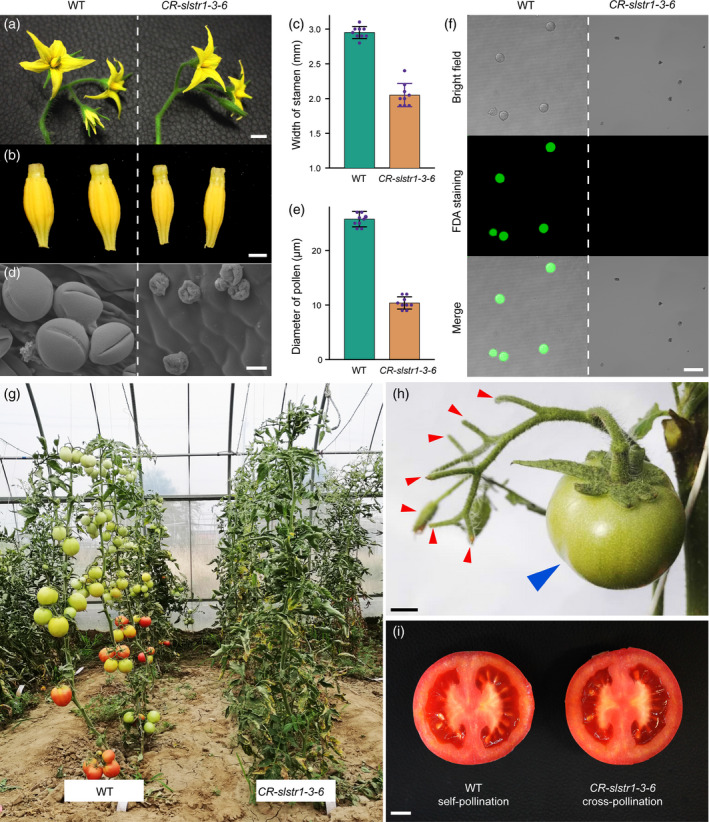Figure 2.

CR‐slstr1‐3‐6 plants are defective in pollen development and male fertility.
(a) Morphological comparison of wild‐type (WT) and CR‐slstr1‐3‐6 flowers.
(b) Morphology of detached WT and CR‐slstr1‐3‐6 anther cones; scale bar: 2 mm.
(c) Width of WT and CR‐slstr1‐3‐6 anther cones (mean ± SD; *significant difference from WT at P < 0.01).
(d) Scanning electron micrographs of WT and CR‐slstr1‐3‐6 pollen grains; scale bar: 10 μm.
(e) Diameter of WT and CR‐slstr1‐3‐6 pollen grains (mean ± SD; *significant difference from WT at P < 0.01).
(f) Viability of WT and CR‐slstr1‐3‐6 pollen grains at the dehiscence stage; scale bar: 50 μm.
(g) Defective fruitset in field‐grown CR‐slstr1‐3‐6 plants indicating male sterility.
(h) CR‐slstr1‐3‐6 plants do not set fruit following self‐pollination (red arrows); scale bar: 1 cm.
(i) CR‐slstr1‐3‐6 plants produce seed‐bearing fruit after cross‐pollination with WT pollen (blue arrow in h); scale bar: 1 cm.
